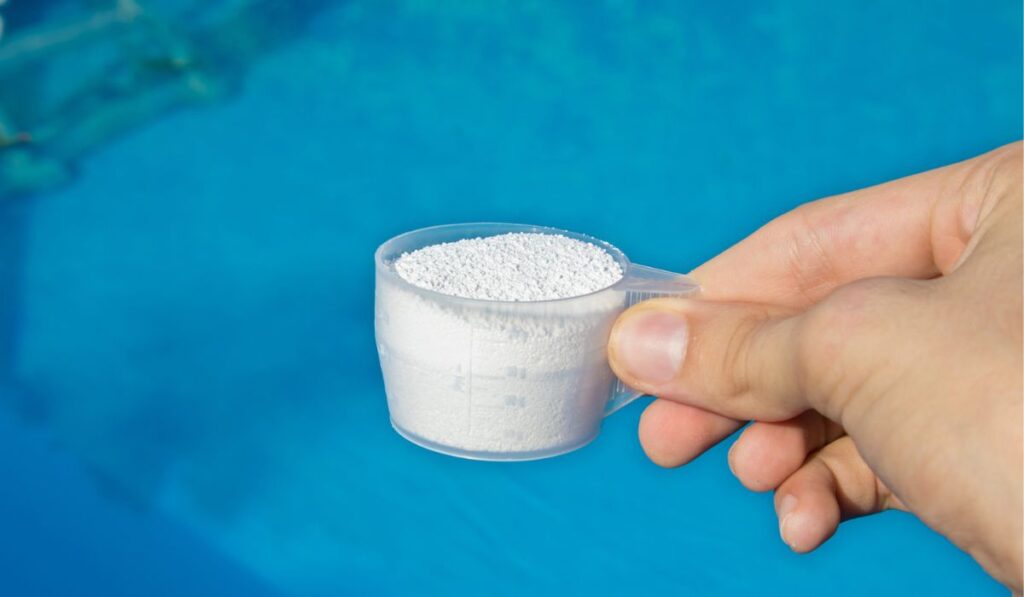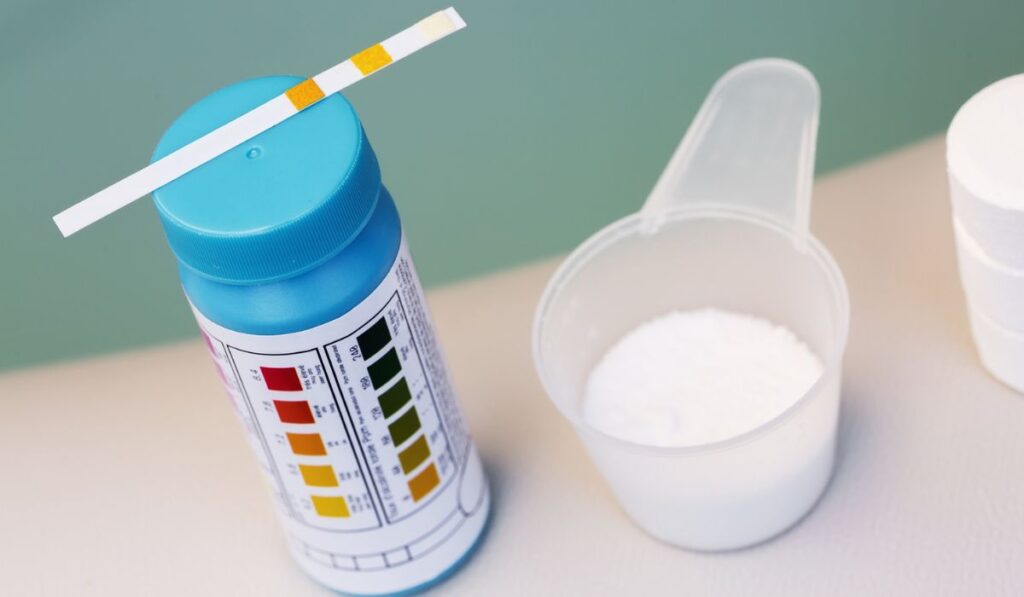A soak in a hot tub is just what you need after a long day. The warm bubbly water eases aches and pain, leaving you feeling relaxed. However, hot tub use can lead to dirt build-up that makes the water unsightly. The good news is that you can keep your hot tub clean and safe for use by shocking it regularly.
You should shock your hot tub once per week — or even twice if it’s used very frequently. You can do this using chlorine or a non-chlorine shock, but be sure to add the chemicals to your hot tub at night, because sunshine limits their effectiveness.
There’s a lot more to shocking a hot tub than what first meets the eye. Let’s get into the details and find out why you need to shock your hot tub — and what could happen if you don’t.
Why Do You Need to Shock Your Hot Tub?

The main reason to shock your hot tub is to clean and clear the water. Here are a few more reasons for doing so:
- Kill bacteria: Chlorine-based shocks sanitize your hot tub water and keep it safe for a nice warm dip.
- Eliminate organic contaminants: Shock treatments get rid of waterborne organic compounds that standard sanitizers struggle to manage.
- Reactivate sanitizers: When sanitizers are utilized, they attach themselves to contaminants. Introducing a shock treatment breaks this bond and frees the chlorine particles from the pollutants. The chlorine becomes active again and continues killing bacteria in your hot tub.
How Frequently Should Your Hot Tub Be Shocked?
You should shock your hot tub once per week. However, if many people use the tub frequently, you may need to shock it twice per week. You can do this with one of two products — chlorine shock or non-chlorine shock.
Since sunlight can weaken the shock’s power, it’s best to add the shock in the evening. That way, it gets at least 12 hours to work in the water — or keep the lid closed if you add the chemicals to your tub during the day.
Chlorine Shock vs. Non-Chlorine Shock
As we’ve seen above, there are two types of shocks that you can use in your hot tub, each one with its own merits and demerits. Here’s the difference between these two shock treatments:
Chlorine Shock
Chlorine shock treatment (on Amazon) uses chlorine compounds to shock a hot tub. It’s very effective if you use it correctly. Keep in mind that if you use this treatment, your tub’s chlorine levels rise, and that can lead to chemical damage.
Experts recommend using chlorine shock after a freshwater change or heavy hot tub use.
Non-Chlorine Shock
Non-chlorine shock (on Amazon) works more effectively if you use it regularly. Non-chlorine compounds help in water oxidation, which is vital for clearing water and eliminating harmful bacteria.
This treatment removes all major water contaminants, ensuring the water is always safe.
Since the shocking treatment uses different compounds that come in various forms, you must observe the following safety tips when using the non-chlorine shock to avoid ending up with cloudy and murky tub water that smells awful:
- Carefully consider the dosage and amount of the chemical you use in your hot tub.
- Use the correct procedure to mix the chemicals and shock your tub.
- Ensure you mix the chemicals in a well-ventilated room and avoid inhaling the compounds.
- Wash your hands after mixing the chemicals.
- Perform regular tests for your hot tub water.
- Store the chemicals in a dry place out of the reach of children once you finish.
If you have no clue how to use the chemical, you can get in touch with a hot tub professional who will guide you on the right way to use it.
What Happens if You Don’t Shock Your Hot Tub?

If you don’t shock your hot tub regularly, dead skin and other elements like hair may accumulate and leave the tub looking messy. Your tub water will eventually smell gross and appear murky. The dirty water may even damage the hot tub if you let it sit there for a long time.
Sanitizers will also be inactive, meaning bacteria and harmful organic materials will build up in the water and could cause diseases.
Additionally, not shocking your hot tub can lead to the accumulation of chloramines or bromamines, which can give false readings on test strips.
What’s the Difference Between Sanitizing and Oxidizing?
The purpose of a sanitizer is to kill disease-causing germs. When you sanitize the water, it means you’re eliminating bacteria from your hot tub.
On the other hand, oxidizing doesn’t eliminate bacteria. An oxidizer, or a shock, removes non-bacterial contaminants and organic materials in your hot tub, including dirt, leaves, algae, chemical by-products, and anything a bather brings in.
The oxidizer uses oxygen to eat up the organic waste that bathers carry into the hot tub. It converts organic waste into harmless gas that escapes into the atmosphere.
Oxidizers convert chloramines in the water back to chlorine if you use chlorine in your tub. If you use bromine, the oxidizers will convert bromamines similarly. This ensures that chlorine or bromine in the hot tub is active and sanitizes the water.
